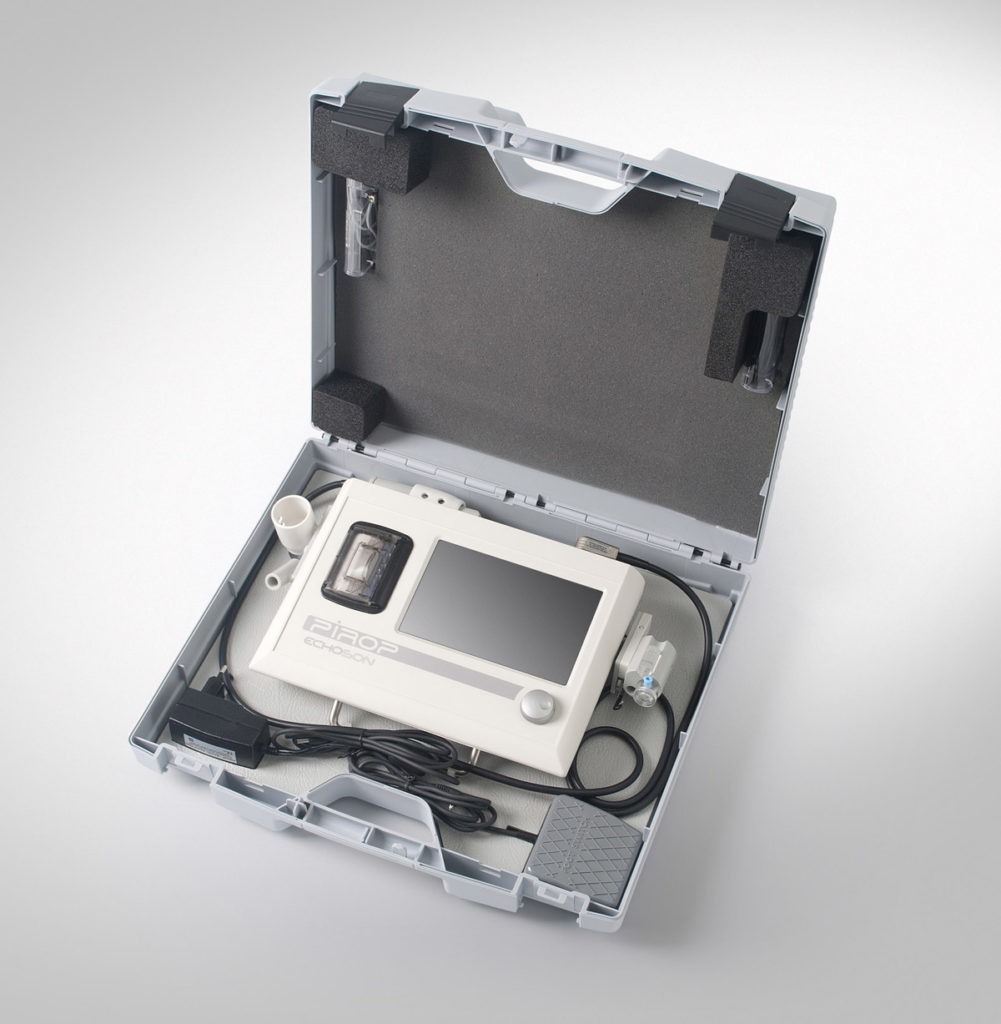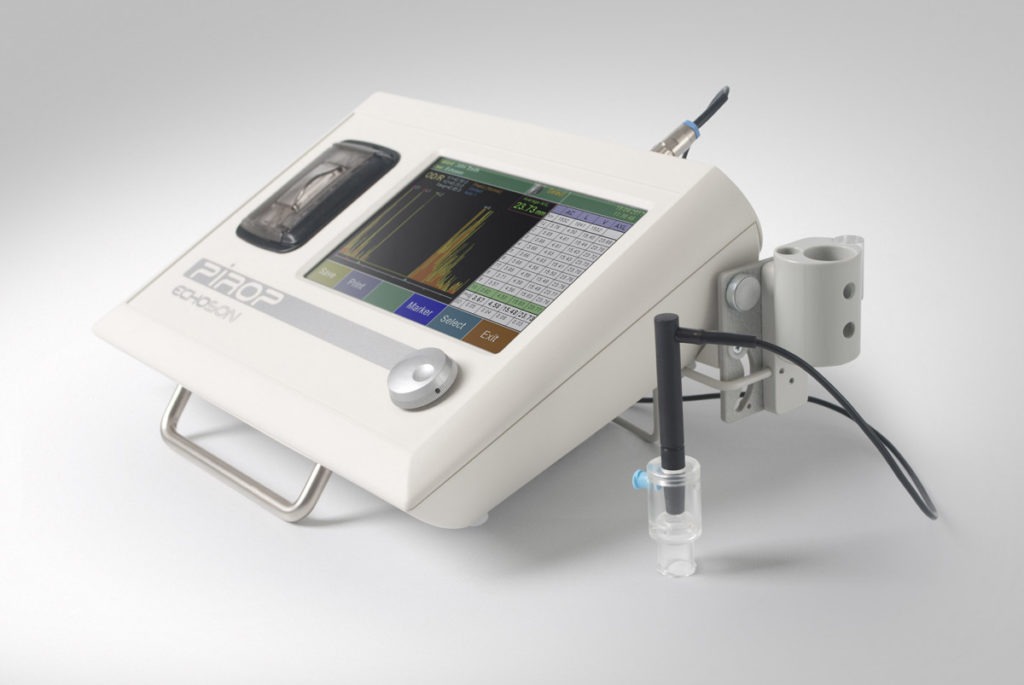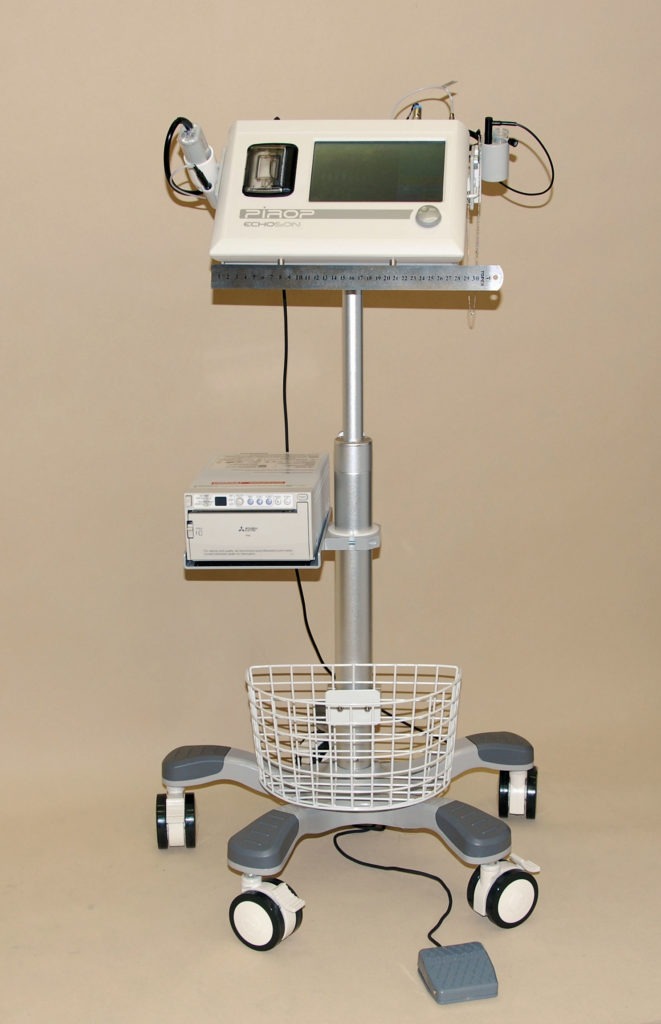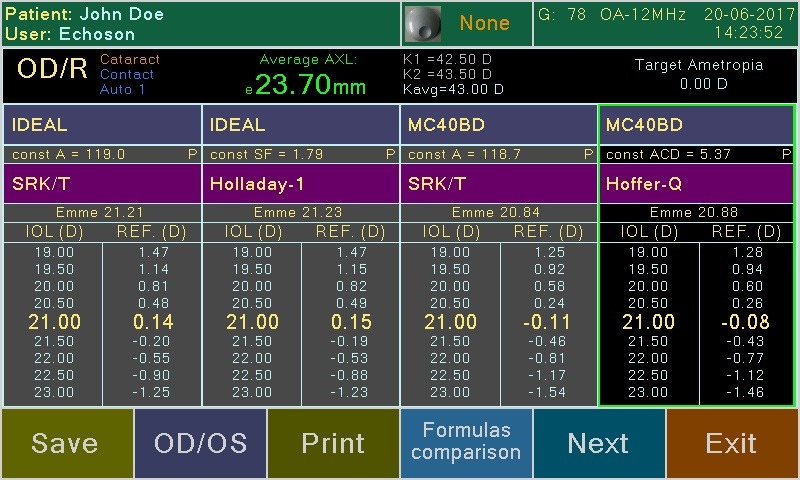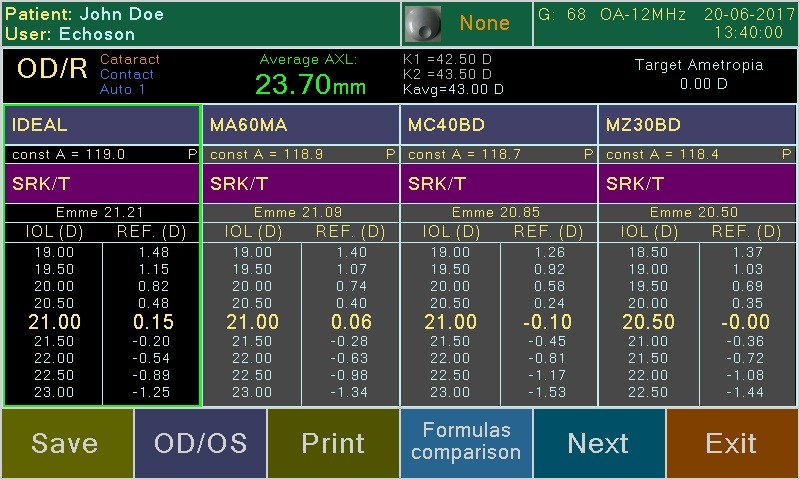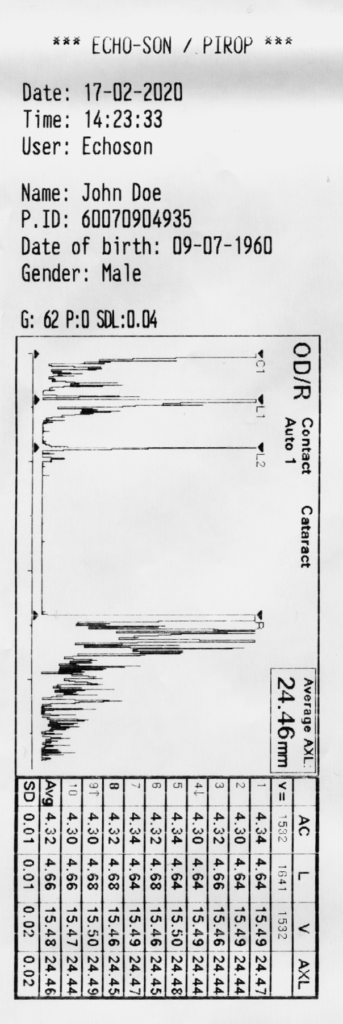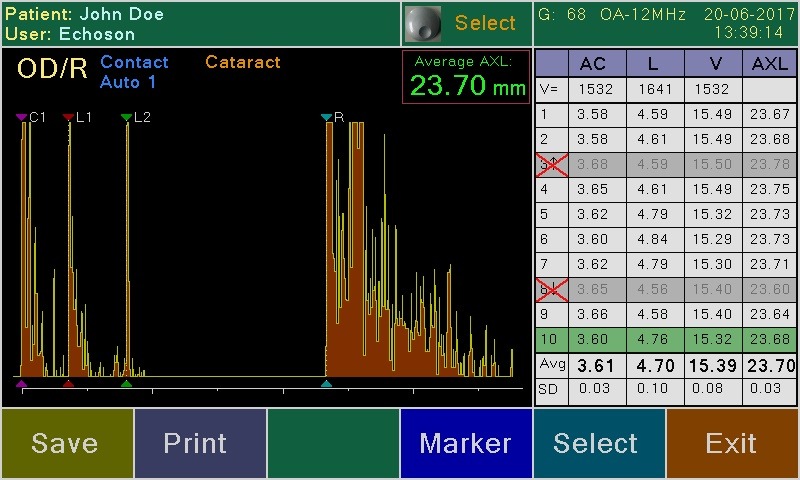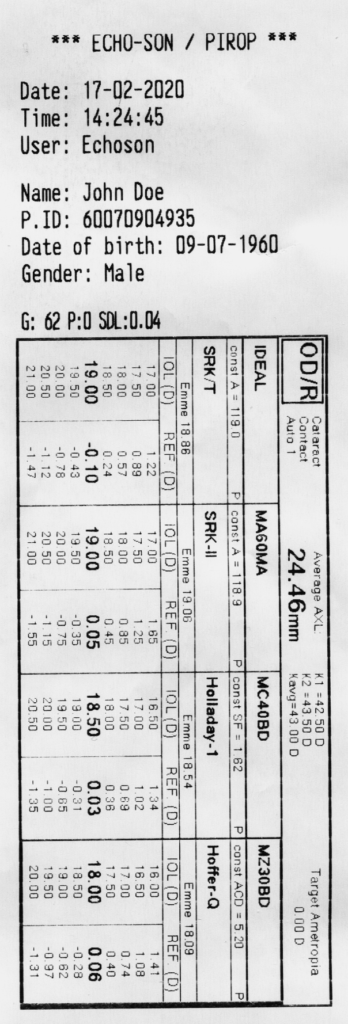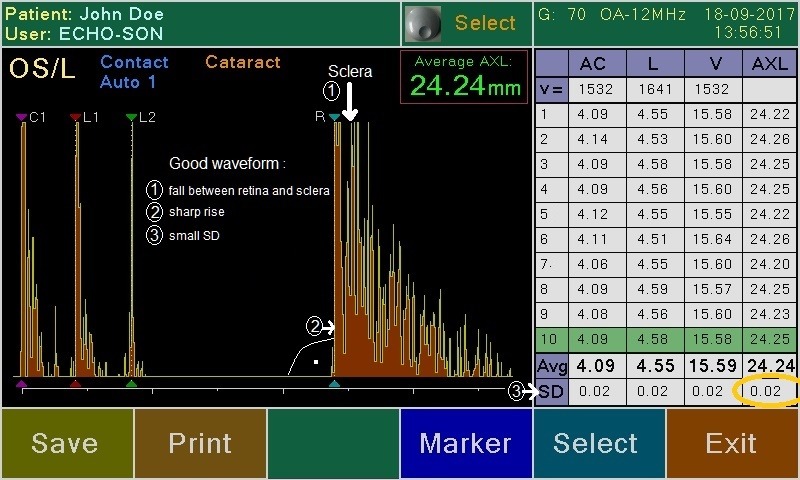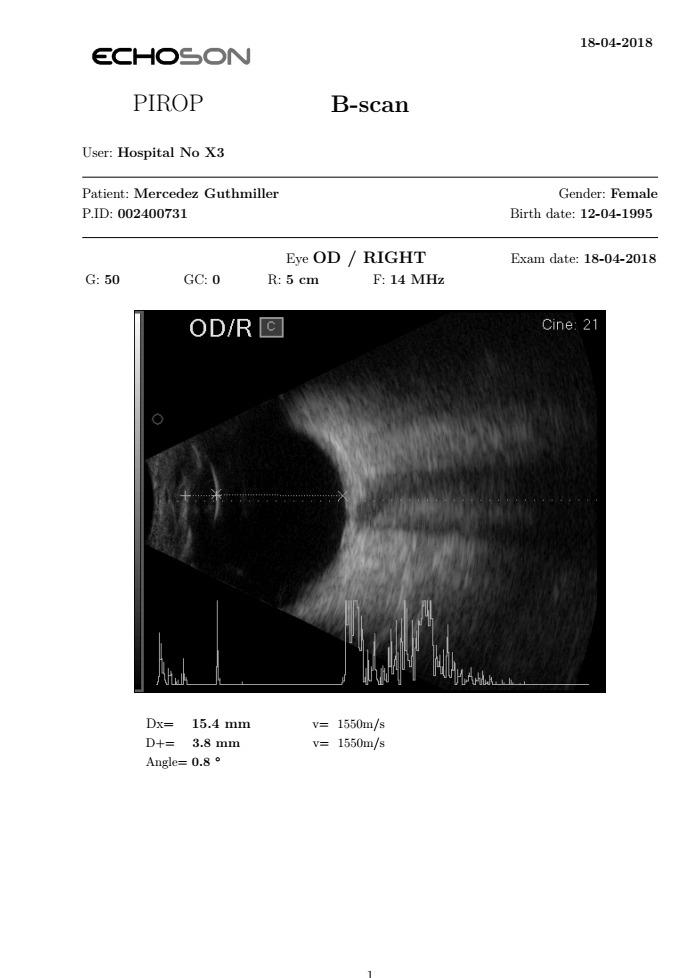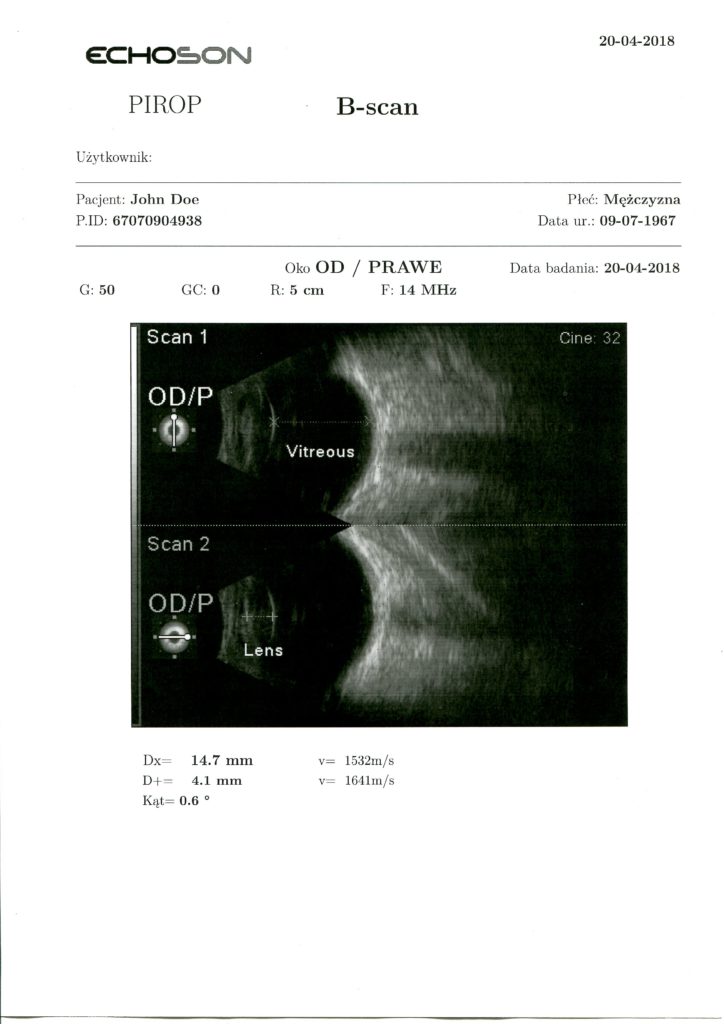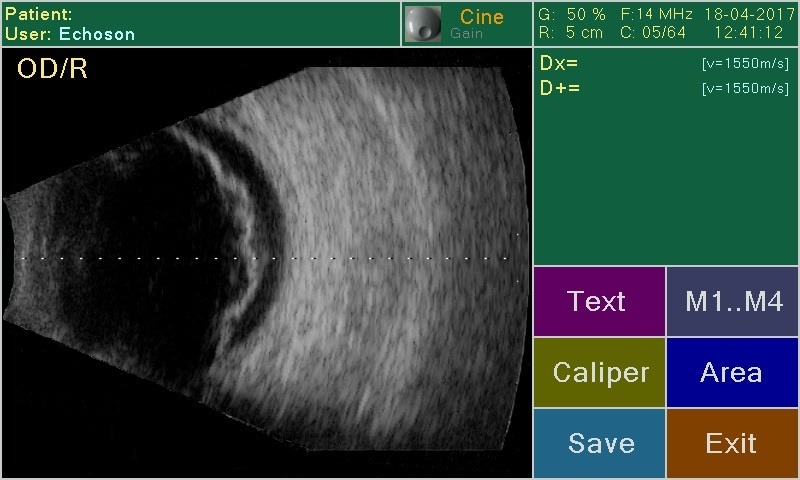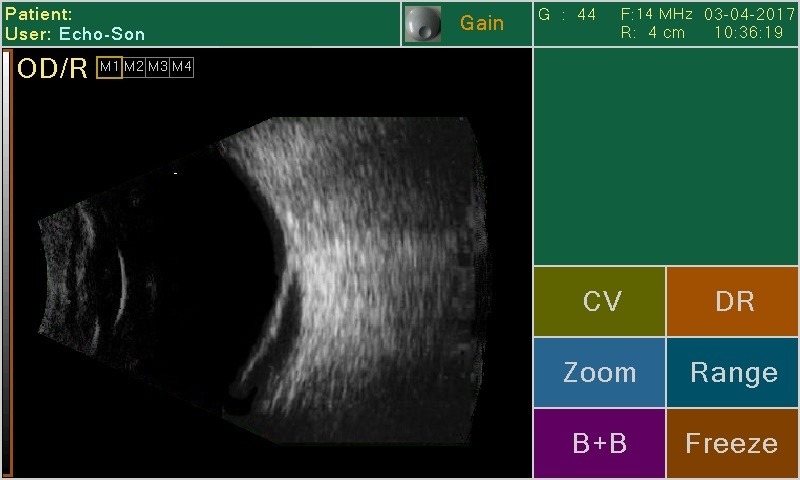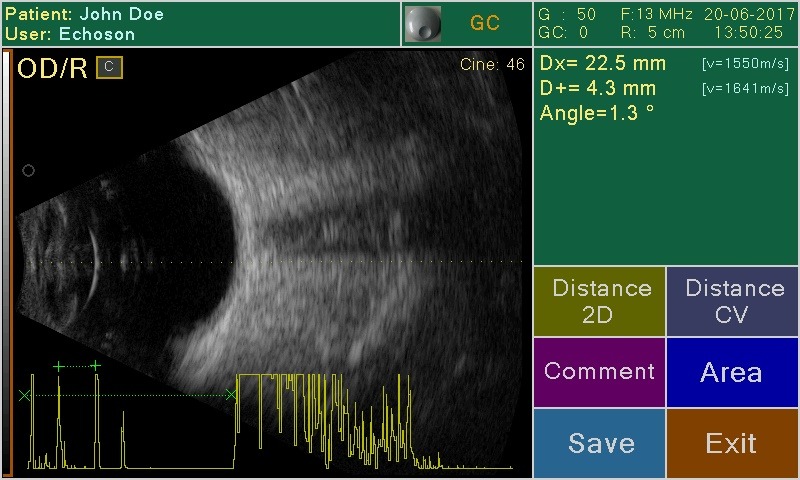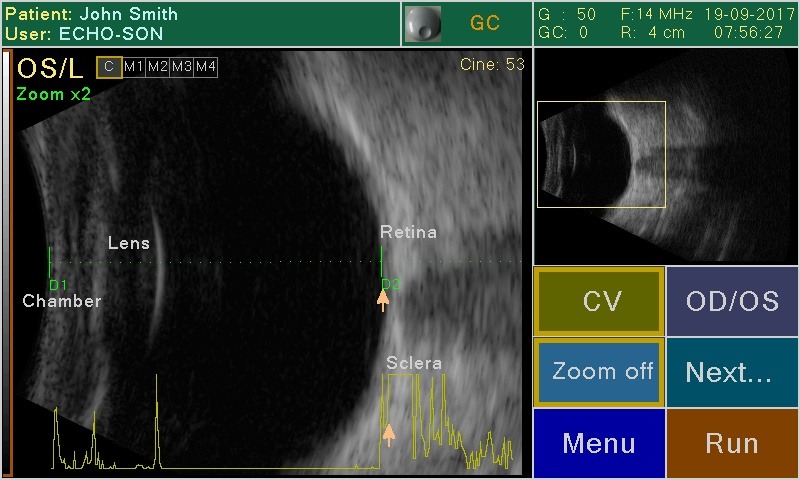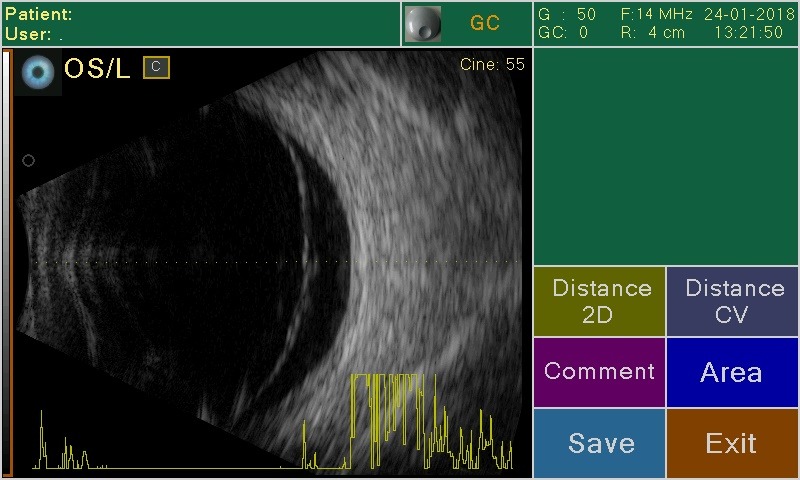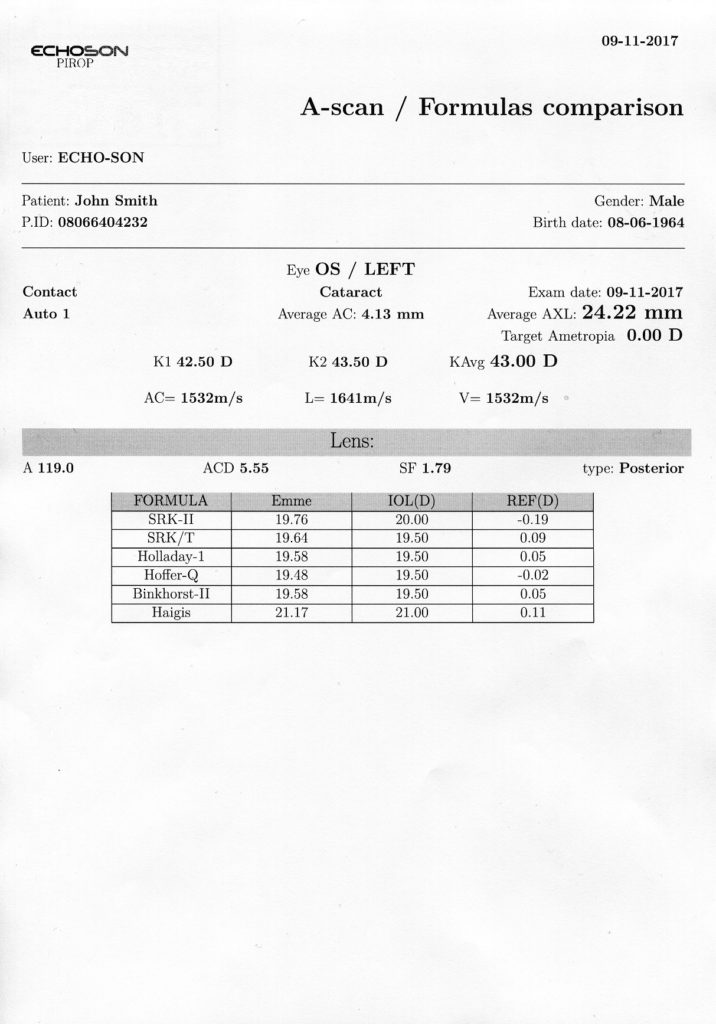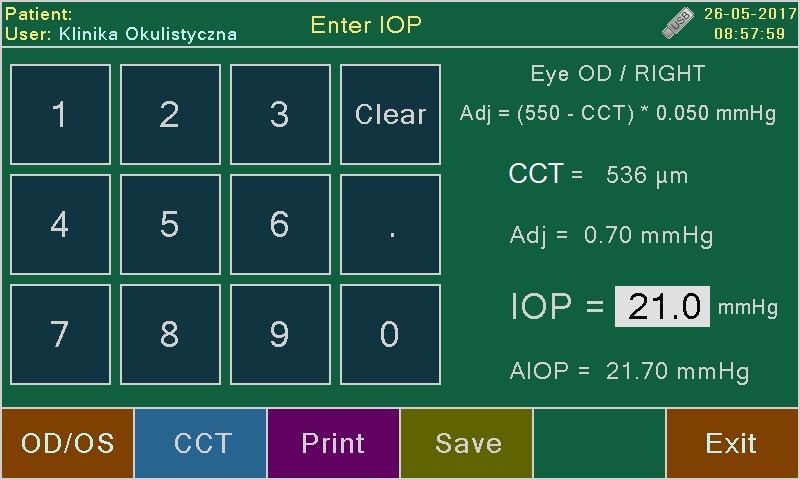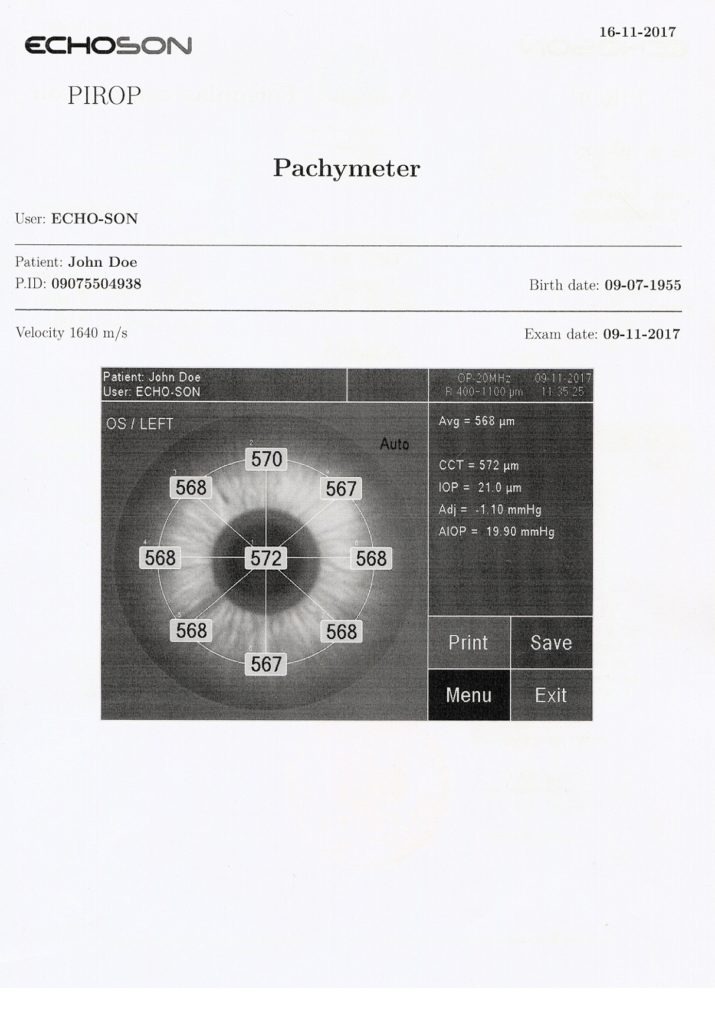








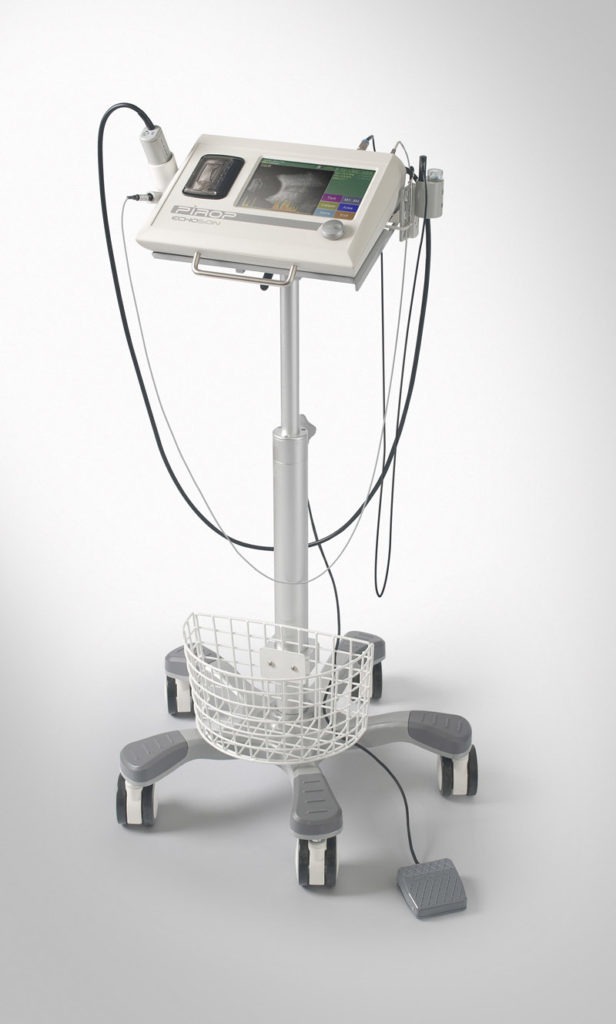
Visualization and Pachymetry of eyeballs (A-Scan + B-Scan + CCT- Pachymeter) – modified version.
A-SCAN – Ocular Lens biometrics
Digital ‘A-scan’ tool for ophthalmology, biometry and lens power calculation of intra-ocular implants.
B-SCAN – Eye examination
Modern ‘B-scan’ tool for ophthalmology, interior eyeball imaging, retina, optical nerve …
CCT- PACHYMETER (P-SCAN) – Ocular cornea biometrics
Up-to-date ultrasonic pachymeter used to measure the thickness of the eye’s cornea (glaucoma screening and refractive surgery), with a very high sampling frequency –400MHz (a significant increase in measurement accuracy – ≤ 2 μm). Corneal pachymetry is an important test in the early detection of glaucoma (central corneal thickness CCT), and it help also surgeons by providing graphical surgical plans to eliminate corneal astigmatism.
PIROP user’s interface based on touch screen technology makes operation easy and user-friendly. The touch screen can be also operated not only with fingers, but also using the enclosed stylus to keep it clean.

– eye axial length (AXL)
– anterior chamber depth (AC)
– lens thickness (LENS)
– vitreous length (VITR)
– input: 100-230V AC 50/60Hz / max 0.7A
– output: +12V DC / 2 A
– Medical device Class IIa complies with MDD 93/42 EEC
– Scanner complies with requirements for Class II devices of EN/IEC 60601-1
– the measurement of central corneal thickness (CCT)
– thickness measurement at arbitrarily selected points
– automatic and manual measurements
– calculation of mean from measurements
– standard deviation of the measured thickness
– ability for rejecting inaccurate measurements
– sophisticated algorithms for the accuracy improvement
– very high frequency for measuring purpose- 400 MHz
– high averaging ratio
– 512 automatic measurements cycles
– easy, ergonomic and user-friendly operation via displayed menu
– virtual keyboard for entering patient data, etc.
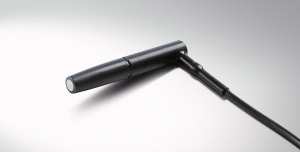
Application: biometry and lens power calculation for intraocular implants.
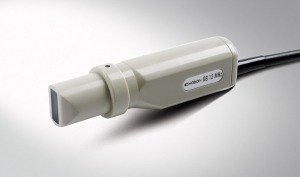
Application: imaging of interior of an eyeball, retina, optical nerve ..
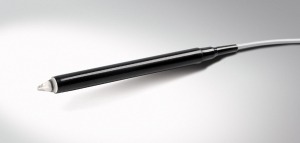
Application: measurements of thickness for all corneal types






